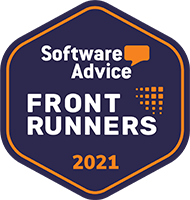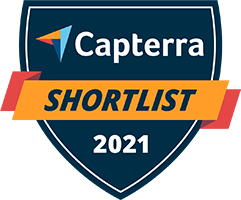AI in Inventory Management: 5 ways AI Can Optimize Your Stockroom Inventory

Artificial intelligence (AI) tools now permeate virtually every industry and function, and inventory management is no exception. AI has grown in prevalence among warehousing and supply chain teams and is even in use at the stockroom level. It’s not hard to see why. AI, when leveraged appropriately, can optimize inventory while freeing up time and resources. In this article, find out the five key ways that AI can help optimize your stockroom inventory.
What are AI Inventory Management Tools?
AI inventory management tools include applications that use artificial intelligence and machine learning to track, analyze, optimize, order, and otherwise manage inventory items at any point of the inventory cycle. Through advanced algorithms that can accurately compile data and predict trends, these tools can help optimize inventory levels, allowing for one-time savings from inventory reduction as well as ongoing savings through reduced carrying costs.
How AI Inventory Management Tools Can Optimize Inventory
1. Accurately Forecast Stockroom Inventory Demand
Demand forecasting is one of the trickiest yet most essential aspects of inventory management. Previously, demand forecasts have been based on historical orders, but those don’t account for actual inventory usage at the stockroom level and can often cause problems with over ordering or stockouts. The better the usage data is that you feed AI the more accurate the results will be.
One exciting use case of AI in inventory management is that it can take usage data from your stockroom’s automated inventory management app and learn your inventory usage trends enough to make recommendations about optimized min/max levels which determine when and what to replenish.
For example, the AI Min/Max Dashboard from eTurns uses real-time data, past usage from the point-of-use, days required to replenish, and average daily usage to provide optimal min/max levels for each inventory item. Even more impressively, it calculates and displays how much you could save in inventory and carrying costs by moving to optimized levels.
2. Reduce Carrying Costs
By calculating optimal min/max levels, AI inventory management tools allow teams to remove cash from inventory and save on carrying costs. Manual inventory management practices are often accompanied by overordering, which leads to higher storage costs, depreciation of inventory, and even obsolescence. These inaccuracies can cost thousands of dollars every year. On the other hand, AI tools like the TrackStock AI Min/Max Dashboard can help you receive actionable advice that pinpoints removable cash and drives down your overall costs.
3. Prevent Stockouts
Without carefully optimized inventory levels, companies run the risk of disappointing their customers and interrupting their overall business needs due to stockouts. Running out of stock and having to wait for days’ worth of lead time is not only costly but also risky, especially in settings like healthcare. Using in-house data markers and manual counts to choose order quantities can only go so far, leading to stockouts that can damage your reputation and cause critical issues for staff who need supplies for their daily work.
Using inventory management AI like the eTurns Min/Max dashboard allows users to receive recommendations about optimized inventory levels using robust analytics, ensuring that stockouts don’t occur. By taking lead times and days required to reple
nish into account, the Min/Max Dashboard helps ensure that you’re never left without critical inventory.
4. Preserve Productivity
AI can take on many of the time-consuming tasks that humans have traditionally completed in the inventory management process. Without causing extra strain on company labor hours or deadlines, AI inventory management tools can calculate the following metrics in real time. It is an impossible task to duplicate with humans the calculations that AI can do for stockroom inventory replenishment metrics such as these:
- Period pull value usage
- Average daily pull value usage
- Period pull usage
- Current Inventory Value
- Quantity remaining until need to order
- Number of days until order
- Lead time
- Date of order
- Average Cost
- Average daily orders usage
- Pull value turns
- Pull turns
- Order turns
- Optimized minimum level
- Optimized maximum level
5. Automate Inventory Management and Procurement
The procurement process is, unfortunately, a breeding ground for inefficiencies and errors. Juggling suppliers, managing inventory counts, preparing order documents, getting approvals potentially at multiple levels, and balancing usage requirements can all take a substantial toll on productivity levels and cost efficiency. Inventory management professionals can use AI to collect data specific to markets and suppliers, price match between vendors, detect errors, analyze and classify procurement spend, and more. These tools can lead to impactful cost and time savings in the procurement process.
AI inventory management tools like TrackStock’s AI Min/Max Dashboard from eTurns can turn a struggling inventory management process rife with stockouts and overly costly procurement practices into a thriving, seamless, optimized pipeline. Leverage key data and analytics to automate inventory replenishment more accurately than every before.



